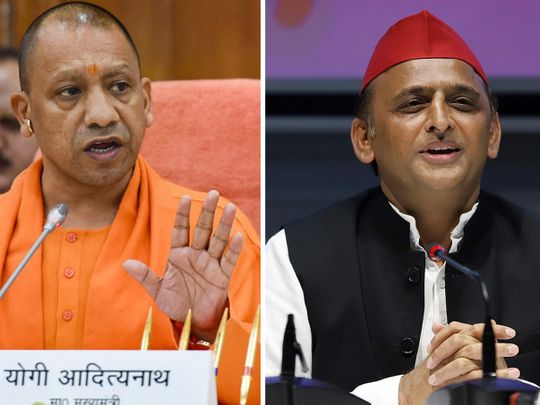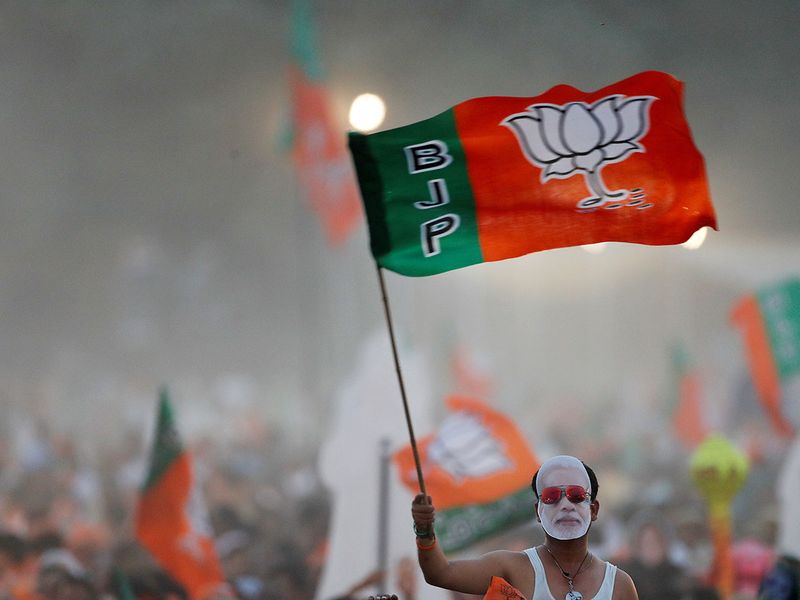
There is an old saying about the Hindi heartland: “Kos kos pe badle paani / chaar kos pe badle vaani” (Every mile the taste of water is different / Every four miles people speak a different dialect). This saying is often used to describe state assembly elections in Uttar Pradesh; how localised they often are, how fragmented, how disparate.
Actually this understanding has been outdated by at least 14 years. In 2007, 2012 and 2017 assembly elections, this Brazil-sized state has given clear, unambiguous verdicts. And to three different parties. The era of short-lived coalition governments ran through 5 elections over 13 years, between 1989 and 2002.
In about 5 months from now, a population of 22 crore (220 million) people will witness another election. Travelling in and around the district of Phulpur last week, this writer saw the portents of another change in UP politics. After 33 years, UP may no longer be a multipolar contest. We’ve got so used to thinking of UP as a three or four cornered election that we are unable to think of UP as ever being a two-sided contest.

A shift is taking place
That seems to have changed. In public perception there are only two political parties today: the Yogi Adityanath-led BJP and the Akhilesh Yadav-led Samajwadi Party.
Over the next 20-30 weeks, this change will likely be internalised deeply by politicians, media and voters alike. It has the potential to change political equations in ways we may not yet be able to imagine. For now, nobody, not even the Samajwadi Party’s core Yadav and Muslim voters, see the BJP losing.
And yet the BJP should be worried about facing a binary contest. A divided opposition is a win-win situation for the BJP. Even if voters are somewhat unhappy, the division of anti-BJP votes makes sure BJP is home.
In a binary contest, it no longer has that insurance.
The impact of this change is already visible in small yet significant ways. In and around Phulpur, voters from the Pasi Dalit community say they have decisively made a shift to the Samajwadi Party.
The BJP in the past had made a big deal of winning over these voters. But now they are deeply unhappy for a variety of reasons ranging from violence against Dalits to inflation. What they don’t openly say is that a good reason for their shift is also that Pasi leader Inderjit Saroj has joined the SP.
Poaching caste leaders who have sway over their community’s votes over a few districts has been key to the BJP’s dominance in Uttar Pradesh since 2014.
That even a few such leaders are joining or allying with the Samajwadi Party speaks of a decline in BJP’s dominance. For the Samajwadi Party, this is no doubt an improvement. So far it has only been seeing attrition, not addition.
It is BJP vs SP
The Mayawati-led Bahujan Samaj Party is for the first time so weak that it is not even part of everyday conversation. I ask one voter who he thought was going to win. “Yogi,” he replies. And who might stand second? “Akhilesh.” And third? “All the rest will be third.” That is equating the BSP with nearly-dead parties such as Congress, which is now little more than a tour and travel company organising touristy sojourns for Priyanka Gandhi.
In Phulpur, I ask BSP core voters, Jatavs, what they are planning to do now that the BSP is not even in the race. One Jatav doctor hints he will find it difficult to desert what he sees as his own party. But his daughter, a first time voter, says young Dalits also want to see a youth leader in power. I don’t have to ask her to explain the obvious hint. She says it herself, “The youth identify with Akhilesh.”

Her doctor father admits the Jatav community is having an internal conversation about whether it is wise to waste their votes on the BSP.
That even a single Dalit is wiling to even think of voting for the Samajwadi Party is a radical change nobody could have predicted some years ago.
None of this means the Samajwadi Party is about to close its gap with the BJP. Its belated campaign has just about begun but it may be too little too late. It is doing many things right: improving its booth strength, wooing small caste leaders, organising localised caste-centric events led by caste leaders.
Akhilesh Yadav is not at the forefront of all of this, giving small leaders a chance to suggest to disparate voters that the SP is capable of being a large umbrella.
Unfortunately, it may not have the time and resources to become a larger umbrella than the BJP. A critical section of voters, non-Yadav OBCs, is still firmly with the BJP. The BJP has been so far ahead of everyone else that Samajwadis on steroids can’t catch up just yet.
An indicator of this distance is found on the Sangam, where three rivers meet. Two young, barely-lettered Nishad men take me on a boat tour. One is 17, the other 18. I ask them about the elections. They say Yogi will return, giving all the stock reasons the BJP is very good at making voters learn by heart.
I ask them about the Samajwadi Party. “Suna hai Akhilesh bhi ladenge,” they say (People say Akhilesh will also contest.)” No, they were not being sarcastic. They were innocently expressing their lack of information.
Samajwadi Party supporters insist a high-pitched Samajwadi campaign on the ground is coming soon. The iconic India Coffee House in Allahabad is perhaps the only place in the city where people imagine the BJP losing.
Over cigarettes, a journalist who’s been hearing forever of the Samajwadi threat to begin campaigning, quotes the Urdu poet Mirza Ghalib:
aah ko chaahiye ik umr asar hone tak
kaun jiitaa hai terii zulf ke sar hone tak
(A sigh needs a lifetime yo have effect
Who lives until the subduing of your curls?)








